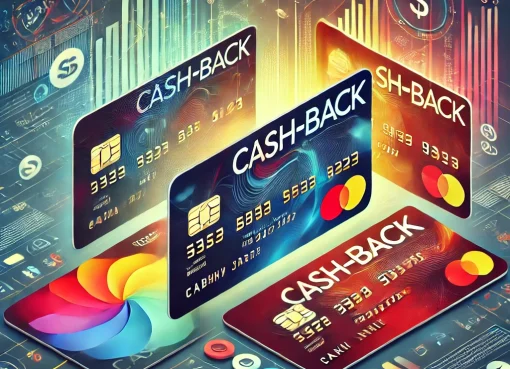Introduction
As the economic landscape continues to evolve, banks are increasingly preparing for a potential surge in credit card delinquencies and defaults. With consumers grappling with rising living costs and economic uncertainties, financial institutions are bracing for what could be a significant uptick in unpaid credit card debts.
The Current Economic Climate
The economic environment is marked by inflation, fluctuating interest rates, and an uneven job market recovery. These factors have collectively strained household budgets, leaving many consumers struggling to manage their debts. According to recent data, consumer credit card debt has reached unprecedented levels, and the ability to pay off these debts is becoming increasingly challenging for many.
Banks’ Proactive Measures
In response to these economic pressures, banks are taking proactive measures to mitigate the potential impact of increased delinquencies. These measures include:
Increased Provisions for Credit Losses: Banks are setting aside larger reserves to cover potential credit losses. This financial cushion is designed to absorb the impact of a surge in delinquencies and defaults, ensuring that the banks remain solvent and operational during economic downturns.
Enhanced Monitoring and Risk Management: Financial institutions are employing advanced data analytics and monitoring tools to identify at-risk accounts early. By closely tracking spending patterns and payment behaviors, banks can intervene with support and solutions before a customer’s debt becomes unmanageable.
Flexible Repayment Options: To assist struggling consumers, many banks are offering flexible repayment plans. These plans may include temporary payment reductions, extended payment terms, or interest rate reductions. The goal is to provide relief to consumers while also ensuring that debts are eventually repaid.
Credit Counseling and Financial Education: Banks are investing in financial education programs to help consumers better manage their finances. By providing resources and counseling services, banks aim to equip consumers with the knowledge and tools needed to avoid future financial difficulties.
Consumer Debt Trends
The trend of rising consumer debt is not a new phenomenon, but the current economic conditions have exacerbated the situation. Several factors contribute to the increase in credit card debt:
Rising Living Costs: Inflation has driven up the cost of essential goods and services, leaving consumers with less disposable income to pay off their debts.
Higher Interest Rates: As central banks adjust interest rates to control inflation, borrowing costs have risen. Higher interest rates mean higher monthly payments for consumers with variable-rate credit cards, making it harder to reduce outstanding balances.
Job Market Uncertainties: Despite improvements in the job market, many consumers still face job insecurity and wage stagnation. This economic uncertainty makes it difficult for individuals to commit to long-term debt repayment plans.
Increased Credit Card Usage: During times of financial stress, consumers often rely more heavily on credit cards to cover expenses. This increased usage can lead to higher debt levels if not managed carefully.
The Broader Economic Impact
The potential rise in credit card delinquencies and defaults could have broader economic implications. If a significant number of consumers default on their credit card debts, banks may tighten lending standards, making it harder for consumers to access credit in the future. This tightening of credit could slow down consumer spending, which is a critical driver of economic growth.
Moreover, higher delinquencies can also affect the credit ratings of financial institutions. Banks with substantial unpaid credit card debts may face downgrades from credit rating agencies, increasing their borrowing costs and reducing their profitability.
The Path Forward
To navigate these challenging times, collaboration between banks, consumers, and policymakers is essential. Several strategies can help mitigate the impact of rising delinquencies:
Policy Interventions: Governments can implement policies to support consumers and stabilize the economy. Measures such as targeted financial assistance, unemployment benefits, and debt relief programs can provide much-needed relief to struggling households.
Consumer Education: Financial literacy programs can play a crucial role in helping consumers manage their debts. Educating consumers about budgeting, saving, and responsible credit usage can reduce the likelihood of future delinquencies.
Innovative Financial Solutions: Banks can develop innovative financial products and services tailored to the needs of at-risk consumers. These solutions could include low-interest consolidation loans, debt management tools, and digital financial coaching.
Strengthening Social Safety Nets: Enhancing social safety nets can provide a buffer for individuals facing economic hardships. Programs that offer healthcare, housing, and food assistance can alleviate some of the financial pressures on households.
Conclusion
As banks brace for a potential increase in credit card delinquencies and defaults, the focus is on proactive measures and collaboration to mitigate the impact. By setting aside provisions for credit losses, enhancing risk management, offering flexible repayment options, and investing in financial education, banks are working to support consumers through these challenging times. However, addressing the root causes of rising consumer debt requires a concerted effort from all stakeholders, including policymakers, financial institutions, and consumers themselves.
The path forward involves a combination of immediate relief measures and long-term strategies to build a more resilient and financially literate society. By working together, it is possible to navigate the economic challenges ahead and create a more stable financial future for all.


